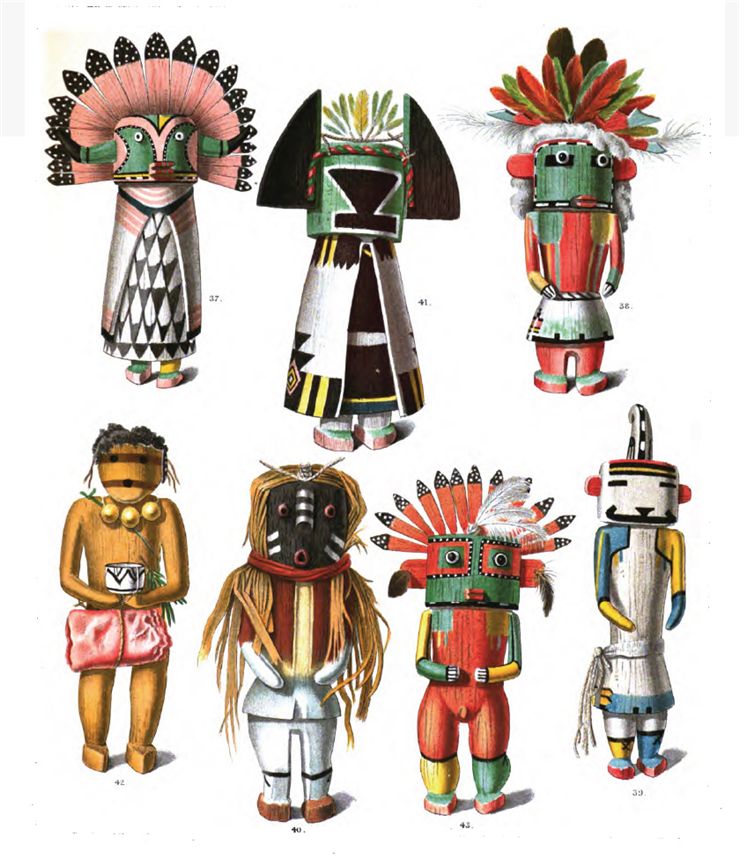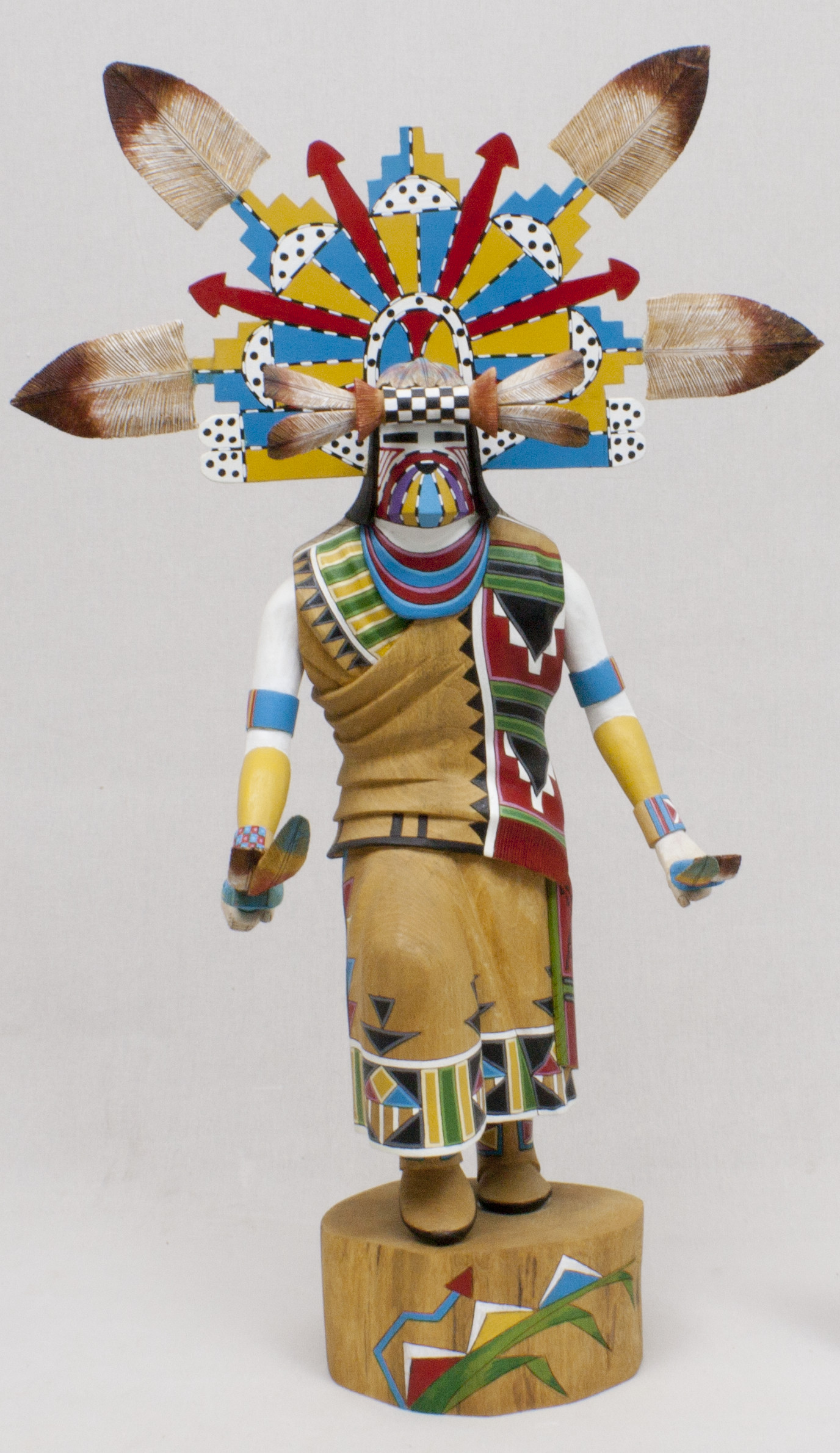
Hopi Kachina Dolls: Sacred Messengers, Enduring Artistry, and a Window into a Living Culture
In the stark, beautiful landscape of the American Southwest, where ancient mesas rise from the desert floor and traditions stretch back millennia, resides the Hopi people. Central to their profound spiritual and cultural life are the Katsinam – benevolent spirit beings who visit the villages for half of the year, bringing blessings, rain, and fertility. As tangible representations of these vital entities, Hopi Kachina dolls, or Katsintithu in the Hopi language, stand as both sacred messengers and highly prized cultural artifacts, bridging the spiritual and material worlds. Far from mere toys, these carved figures are intricate teaching tools, expressions of deep reverence, and testaments to an unbroken lineage of artistic excellence.
To understand the Kachina doll, one must first grasp the Hopi worldview. The Hopi believe in a cyclical universe, governed by a delicate balance of forces. The Katsinam are not gods, but rather intermediaries – spirits of ancestors, clouds, animals, and plants – who emerge from the San Francisco Peaks and other sacred places each year around the winter solstice. They participate in elaborate ceremonies, known as Kachina Dances, which involve masked dancers, songs, and prayers, concluding with their departure after the summer solstice. During this "Kachina season," the Katsinam are believed to bring the vital rain needed for the arid region’s crops, particularly corn, which is central to Hopi survival and identity.
The Katsintithu: Gifts and Guides
The Kachina dolls are inextricably linked to these ceremonies. They are carved by Hopi men and presented to Hopi children, primarily girls, by the masked Katsinam dancers themselves during the dances. This act underscores their significance: they are not manufactured for commercial purposes within the Hopi context but are sacred gifts. Their primary purpose is didactic. They serve as tangible references for children, helping them learn about the hundreds of different Katsinam, each with its unique appearance, costume, dance, song, and spiritual function.
"They’re not toys," emphasizes Herman G. Lewis, a renowned Hopi artist and elder, in various interviews. "We make them because we want our children to know what a katsina looks like, what he does, what he represents." Children are taught to hang their dolls on the walls of their homes, where they can study their intricate details and memorize the stories and lessons associated with each figure. This deepens their understanding of the complex Hopi cosmology and prepares them for future participation in ceremonial life. The dolls are a visual encyclopedia of the spiritual world, crucial for transmitting knowledge across generations in a culture where oral tradition is paramount.

The Artistry: From Root to Revelation
The creation of a Kachina doll is a meticulous and deeply spiritual process. Traditionally, the dolls are carved from the root of the cottonwood tree, a material chosen for its softness, ease of carving, and its spiritual significance. Cottonwood trees often grow near sources of water, making them symbolic of life and sustenance in the arid Southwest – a direct link to the rain-bringing power of the Katsinam themselves.
Early Kachina dolls, particularly those from the late 19th and early 20th centuries, were often simple, flat figures, sometimes with rudimentary limbs. They were painted with natural pigments derived from minerals and plants, reflecting the earthy tones of the Hopi landscape. These "flat dolls" or "cradle dolls" were specifically designed to be hung from cradles or walls, their two-dimensional nature serving their primary educational function without the need for elaborate posing.
Over time, and influenced by external interest from collectors and anthropologists, the artistry evolved. Carvers began to create more detailed, three-dimensional figures, capturing the dynamic poses of the dancers. Modern Kachina dolls often exhibit incredible anatomical precision, intricate carving of costumes and headdresses, and vibrant acrylic paints that allow for a wider palette and greater detail. Master carvers today are celebrated for their ability to imbue the figures with a sense of movement and life, often depicting the Katsina in mid-dance, complete with flowing sashes, feathered headdresses, and ceremonial objects. Each element – from the specific mask and symbols painted on it to the type of feathers and accessories – carries specific meaning, identifying the individual Katsina and its purpose.
The Dual Nature: Sacred Object to Cultural Artifact
The journey of the Hopi Kachina doll from an exclusively sacred object within the Hopi community to a globally recognized cultural artifact began in the late 19th and early 20th centuries. Anthropologists like Jesse Walter Fewkes and collectors became fascinated by these unique figures, recognizing their artistic merit and ethnographic value. This external interest gradually led to the dolls being seen, and eventually sold, as art objects.
This commercialization introduced a complex dynamic. For many Hopi carvers, selling dolls provided a vital economic lifeline, allowing them to support their families and maintain their traditional way of life in a modern economy. It also brought Hopi art and culture to a wider audience, fostering appreciation and understanding. However, it also raised concerns within the Hopi community about the potential for trivialization or misinterpretation of these deeply sacred items. The distinction between a doll carved for an outsider and a doll given to a Hopi child remains significant. Dolls intended for the art market are often more elaborate and detailed, catering to collector preferences, while those for internal use maintain a more traditional, sometimes simpler, form.
The demand for Kachina dolls has unfortunately also led to issues of cultural appropriation and imitation. Non-Hopi artists have sometimes produced "Kachina-style" carvings, often lacking the spiritual understanding and traditional knowledge embedded in authentic Hopi work. This not only infringes on the intellectual property of the Hopi people but also dilutes the authenticity and sacred meaning of the dolls. The Hopi Cultural Preservation Office and individual artists actively work to educate the public about authentic Hopi craftsmanship and the importance of supporting genuine Hopi artists.
Enduring Significance and Future Challenges

Today, Hopi Kachina dolls remain potent symbols of a vibrant, living culture. They are featured in major museums worldwide, cherished by collectors, and, most importantly, continue to play their integral role in the spiritual education of Hopi children. The contemporary Hopi community navigates the complexities of preserving their traditions in a rapidly changing world, balancing the desire to share their rich culture with the need to protect its sacred core.
Challenges persist, including the ongoing struggle against cultural appropriation, the impact of economic pressures on traditional practices, and the need to engage younger generations in the demanding art of carving and the deeper spiritual knowledge it represents. Yet, the Hopi have demonstrated remarkable resilience and commitment to their heritage. Through initiatives that promote traditional carving techniques, educate the public, and empower Hopi artists, they strive to ensure that the Katsintithu continue their dual role for centuries to come.
The Hopi Kachina doll, with its intricate details and profound symbolism, is more than just a beautiful carving. It is a tangible link to the spirit world, a pedagogical tool that has sustained a culture for generations, and a powerful statement of identity and belief. Each doll whispers stories of rain, corn, community, and the enduring spiritual connection between the Hopi people and the benevolent Katsinam, serving as a timeless messenger across worlds and generations. Understanding these sacred messengers offers not just an appreciation for art, but a profound respect for a living culture whose traditions continue to enrich the human experience.